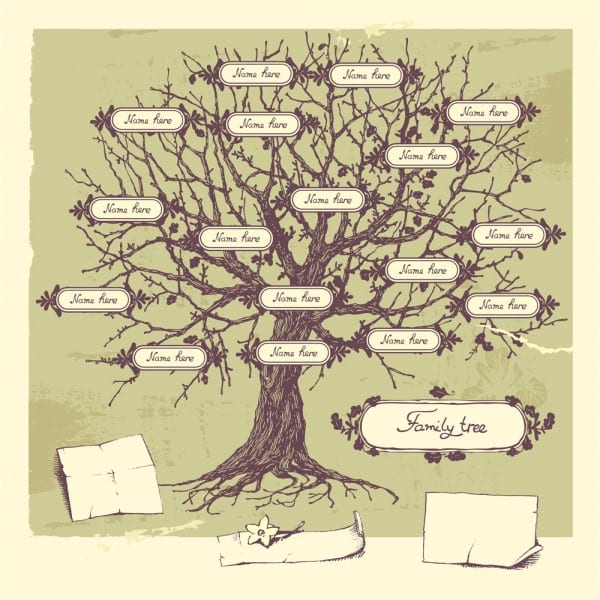If you are planning on building a family tree online, here are some very important issues to think about before you start. The Internet has allowed individuals to easily find genealogy information and documents, history, and more. However, it has also allowed the spread of mis-information, mistakes, legal data on living people, and more. Before you start – or if you have already started – make decisions about the following 4 tips:
1. Living People
Remember that living people may not wish to be found online, with their data easily available for anyone to see. ‘Mother’s maiden name’ is such a common identity question, that it should not be tossed out on the Internet. In addition, you may have stories or details that some members of your extended family are not aware of or do not wish to have public in any way. Be respectful of your family members – make certain that your online tree does not have children, living family members, or juicy stories which might disconcert others.
2. Documents Data
All details in your family tree need to have excellent quality sources to support the truth of the information. These could be certificates, records, registrations, legal documents, photographs, wills, and the like. When you put your family tree online, add details of the documents which support your data. You do not need to scan them online, but do record that you have a copy in your files, or record what it is that is your source.
3. Other People’s Trees, Other People’s Information
Unless you can see that there is primary source material (that is, documents or records made at the time of an event), do not use other people’s family trees or information in your online family tree. You may simply be repeating other people’s mistakes. And then someone will copy you, and someone will copy that person, and so on and so on. Do not make this mistake. If you find a very likely match, but with no sources listed, contact the person who put it online, and ask them what particular sources they used to support the data for those individuals and families. No sources? They just copied someone else’s tree? Sigh. Back to your searches. Use the information as a rough guide, only.
4. How To Share Your Family Tree
Generally if you have an online family tree, you are able to share it with your relatives using an “invitation” which allows them access to view the tree. Make sure that you are the only person to have the power to change or edit the tree. You do not want others ‘correcting’ the tree putting in what they think is true – when you have actually found documents showing a well-sourced detail! Of course, if another relative is excited about genealogy and would like to work with you, that is great – the two of you can figure out how and when to edit the tree as either of you find more information.
You can email a GEDCOM of your family tree at any time to a relative, as long as they have a family tree software program on their computer. There are several FREE versions available for download on the Internet. Any software program you use will have the capability to “import GEDCOM file” into it. Quite easy to do. Use your Help button on the software toolbar, and it will walk you through the process.
Enjoy your family tree discoveries!

